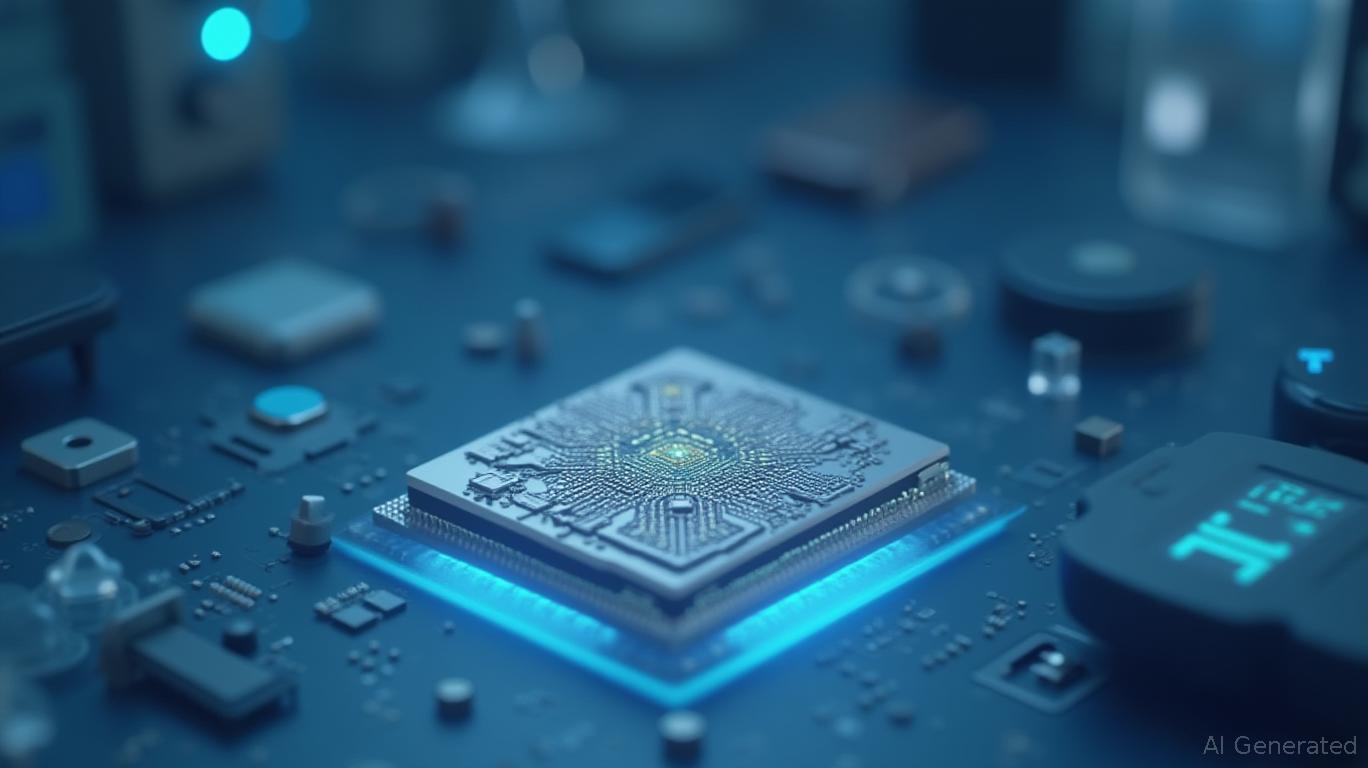Faraday Technology's FlashKit-22RRAM: A Catalyst for Agile IoT Innovation and Value Creation
The IoT market is projected to grow to over $1.5 trillion by 2030, driven by edge computing, AIoT, and industrial automation. Yet, the complexity of designing specialized System-on-Chip (SoC) solutions for these applications remains a bottleneck. Enter Faraday Technology's FlashKit-22RRAM platform, a silicon-proven, cost-efficient, and flexible SoC development framework that could redefine the landscape of IoT innovation. By integrating embedded Resistive RAM (RRAM) and QuickLogic's embedded FPGA (eFPGA), this platform addresses critical pain points in IoT SoC design—cost, reliability, and post-silicon adaptability—positioning Faraday as a pivotal player in the race to dominate edge computing.

1. Cost-Efficiency Through Embedded RRAM
The FlashKit-22RRAM's embedded RRAM subsystem is a game-changer. Unlike traditional non-volatile memory (NVM) technologies like flash, RRAM requires fewer mask layers, reducing non-recurring engineering (NRE) costs by up to 20-30%. Its low-power, high-speed performance—comparable to SST eFlash—makes it ideal for battery-operated IoT devices. By minimizing development costs and accelerating time-to-market, Faraday's platform lowers the barrier for system companies to deploy customized SoCs for AIoT, wearables, and industrial IoT.
For example, a smart thermostat manufacturer can now integrate custom AI algorithms into an SoC without prohibitive NRE costs, enabling faster iteration cycles and competitive pricing. The RRAM's silicon-proven reliability (tested across UMC's 22ULP process) further reduces risk, a critical factor for volume production in consumer markets.
2. Silicon-Proven Reliability and Process Technology
Faraday's partnership with United Microelectronics Corporation (UMC) anchors the FlashKit-22RRAM in proven, cost-effective silicon. The 22ULP (Ultra-Low Power) process node balances performance and power efficiency, crucial for edge devices. With a 180nm-equivalent transistor density, it offers robust performance at a fraction of the cost of advanced nodes like 5nm or 3nm.
This combination of mature process technology and embedded RRAM allows Faraday to deliver SoCs with 10-15% lower power consumption compared to competing solutions. For instance, a smart home gateway using FlashKit-22RRAM can run AI-driven analytics while maintaining battery life—key for mass adoption in consumer IoT.
3. eFPGA Flexibility: Post-Silicon Customization at Scale
The integration of QuickLogic's eFPGA IP is the platform's crown jewel. Unlike traditional FPGAs, which require separate chips, the embedded FPGA allows post-silicon logic updates, GPIO reassignment, and ECO fixes—without redesigning the chip. This “agile silicon” approach slashes time-to-market by 30-50%, enabling manufacturers to:
- Update hardware functionality post-deployment (e.g., adding new sensor protocols).
- Extend product lifecycles by supporting evolving standards (e.g., Bluetooth 6.0 compatibility).
- Differentiate in crowded markets by customizing compute workloads (e.g., edge AI inference vs. sensor fusion).
For example, a drone manufacturer could reprogram the eFPGA to optimize for real-time video processing post-production, eliminating the need for costly hardware redesigns. QuickLogic's open-source toolchain further lowers development costs, diverging from proprietary FPGA ecosystems like Xilinx (AMD) or Intel.
4. Strategic Ecosystem & Market Leadership
Faraday's storefront business model—offering pre-verified IP blocks (USB 3.0, PCIe Gen4, etc.) and design services—complements the FlashKit-22RRAM's strengths. By bundling RRAM, eFPGA, and a library of analog/RF IPs, Faraday reduces integration complexity for customers.
The partnership with QuickLogic also opens new revenue streams. As eFPGA adoption grows, Faraday gains IP licensing fees and royalty revenue from volume production—a model similar to ARM's success in the processor IP market.
Investment Thesis: Faraday's Path to Leadership
Faraday's FlashKit-22RRAM targets a $50+ billion IoT SoC market, with AIoT and edge computing as the fastest-growing segments. Its strengths—cost efficiency, silicon reliability, and post-silicon flexibility—position it to capture share from fragmented competitors like Rambus (RMBS) or Cypress (now Infineon).
Key catalysts for investors:
1. Volume production wins: Adoption by Tier-1 IoT manufacturers (e.g., Samsung, Xiaomi) in 2025-2026.
2. eFPGA licensing growth: QuickLogic's revenue from Faraday's platform could hit $20-30M annually by 2027.
3. Advanced packaging synergies: Integration with UMC's 22ULP and QuickLogic's Intel 18A eFPGA IP creates a path to heterogeneous chiplets, appealing to 5G and automotive markets.
Risk Factors & Considerations
- Competitor IP encroachment: Companies like Synopsys (SNPS) or Cadence (CDNS) may develop rival eFPGA solutions.
- Market adoption pace: IoT customers may prioritize established but costly alternatives (e.g., multi-chip FPGAs + ASICs).
- Foundry capacity constraints: UMC's 22ULP node utilization could limit scaling if demand surges.
Conclusion: Buy the Future of Edge Computing
Faraday's FlashKit-22RRAM is more than a product—it's a platform for silicon agility in an era where IoT devices must evolve faster than their hardware lifecycles. With a strong partnership ecosystem, proven technology, and a focus on cost efficiency, Faraday is well-positioned to capitalize on the $1.5 trillion IoT opportunity.
For investors, 4517.TW offers asymmetric upside if the platform gains traction in 2025-2026. A target price of NT$30-35 (vs. current ~NT$25) aligns with a 25%+ revenue growth trajectory. Monitor Q3 2025 customer wins and eFPGA licensing metrics for confirmation of momentum.
In a world where “agile” is the new “scalable,” Faraday's vision is clear: build once, adapt forever.
Sign up for free to continue reading
By continuing, I agree to the
Market Data Terms of Service and Privacy Statement

Comments
No comments yet